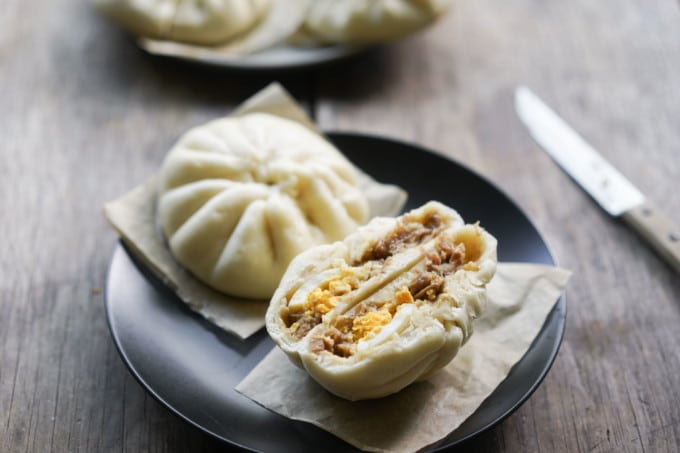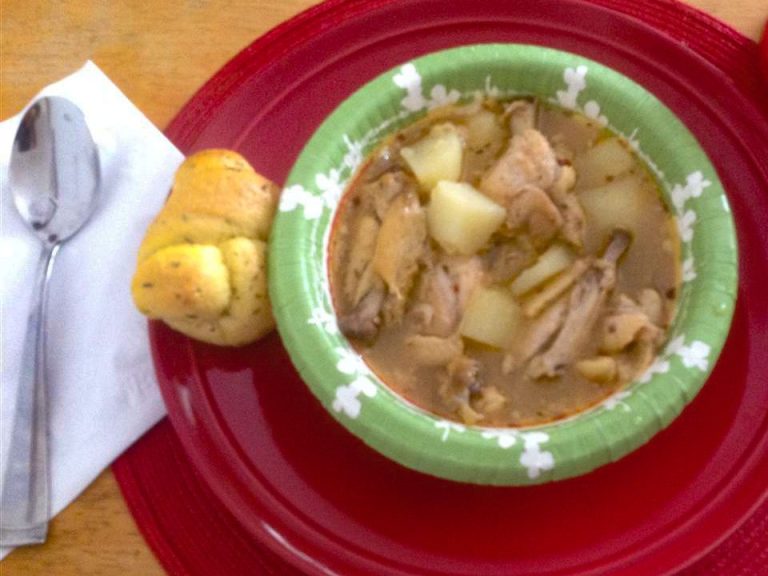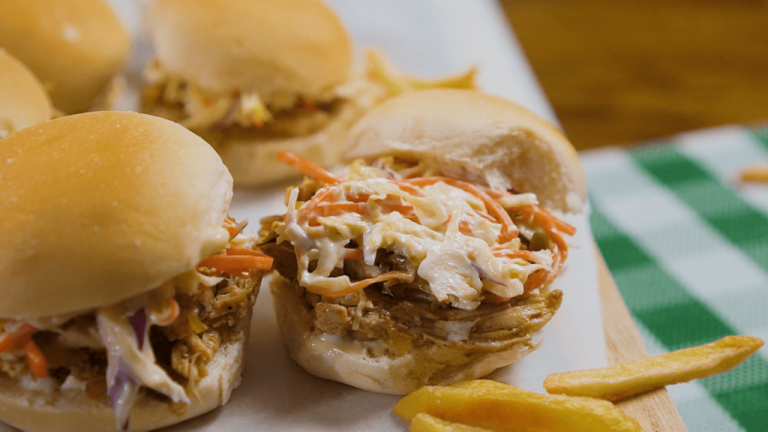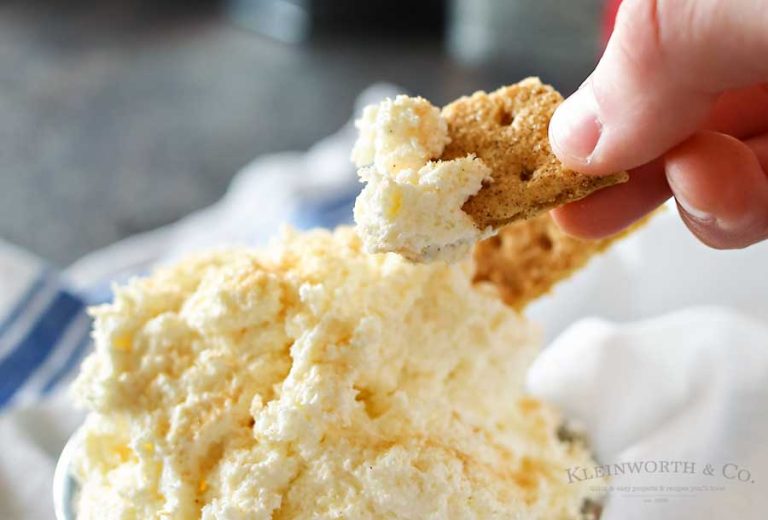Siopao Filipino Recipe: Filipino Steamed Dumplings
Siopao’s origins trace back to Chinese cuisine, specifically the traditional dim sum. Chinese immigrants introduced this steamed bun, originally called “baozi,” to the Philippines. Over time, Filipinos adapted baozi to local tastes, resulting in the siopao you enjoy today. The buns, typically filled with pork, vegetables, or a combination, became a mainstay due to their portability and ease of preparation.
How Siopao Became a Filipino Staple
Siopao’s transformation into a Filipino staple involved a blend of cultural adaptation and culinary creativity. In the early 20th century, Chinese settlers incorporated local ingredients into the fillings, such as adobo and asado, to cater to Filipino palates. This fusion increased its popularity across the country. You now find siopao in numerous eateries, bakeries, and street food stalls, solidifying its status as a beloved snack and comfort food in everyday Filipino life.
Ingredients and Varieties of Siopao
Common Fillings in Siopao
Siopao offers various fillings that appeal to different tastes. Pork is a traditional favorite, often seasoned with soy sauce, sugar, and oyster sauce. Chicken, another popular choice, might include similar seasonings but can also feature ginger and garlic for added flavor. Some versions use beef, seasoned with hoisin sauce, giving a richer taste. Vegetarians enjoy Siopao stuffed with a mix of mushrooms, tofu, and vegetables like carrots and peas.
- Pork: Seasoned with soy sauce, sugar, and oyster sauce.
- Chicken: Incorporates ginger and garlic, seasoned similar to pork.
- Beef: Typically seasoned with hoisin sauce, offering a richer flavor.
- Vegetarian: Includes mushrooms, tofu, carrots, and peas.
Creating the Perfect Siopao Dough
Siopao dough sets this dish apart. Opt for all-purpose flour for a soft, fluffy texture. Yeast acts as the leavening agent, making the buns rise and become airy. Sugar provides a slight sweetness, complementing savory fillings. Salt enhances the dough’s overall taste. Baking powder ensures the buns rise uniformly without becoming overly dense. Milk or water (often used interchangeably) binds the ingredients, resulting in a smooth dough. Knead the mixture until it attains a smooth, elastic texture, then let it rise until it doubles in size.
- All-Purpose Flour: Ensures a soft, fluffy texture.
- Yeast: Acts as a leavening agent, making the buns airy.
- Sugar: Adds a slight sweetness.
- Salt: Enhances overall taste.
- Baking Powder: Ensures uniform rising.
- Milk or Water: Binds ingredients, creating a smooth dough.
The Art of Cooking Siopao
Steaming Techniques for Perfect Dumplings
Achieving perfect Siopao requires precise steaming techniques. First, ensure your steamer is properly set up. Use a bamboo steamer or a metal one with a tight-fitting lid to retain moisture. Place parchment paper under each bun to prevent sticking.
Start by boiling water in your pot. Once boiling, reduce to a simmer. Arrange Siopao buns, leaving space between them for expansion. Steam for 20 minutes over medium heat, maintaining a consistent water level to avoid drying out the buns. After the steaming process, let them rest for five minutes before serving.
Tips and Tricks for First-Timers
First-timers can master Siopao with some handy tips. Begin by practicing dough consistency. Knead until smooth, neither too sticky nor too dry, to achieve a fluffy texture.
Second, focus on filling preparation. Cook fillings thoroughly and cool them down before assembling to prevent soggy buns.
Lastly, reheating is straightforward. Steam leftover buns over boiling water for about ten minutes, restoring their soft texture without drying them out. These tips help you create delicious Siopao, ensuring an enjoyable cooking experience.
Siopao in Filipino Culture and Cuisine
Siopao’s Role in Festivals and Everyday Life
Siopao plays a significant role in Filipino festivals and everyday life. During major celebrations like fiestas and Christmas, these steamed dumplings often find a place in family gatherings and community feasts. Vendors frequently sell Siopao at street corners during these events, adding to their festive appeal. In everyday life, Siopao serves as a popular merienda (snack) and is available in many local eateries and bakeries. Whether you’re grabbing a quick bite or hosting family events, Siopao is both a convenient and satisfying choice.
Popular Siopao Hubs Across the Philippines
Several popular Siopao hubs dot the Philippines, each renowned for their unique flavors and preparations. Manila is home to Chinatown, where you can find authentic Chinese-style Siopao. Establishments like Henlin and Ma Mon Luk are widely known for their delicious variations. Cebu offers its version with a slightly sweeter dough, often filled with Cebuano-style asado. Davao features Siopao with local twists, incorporating native herbs and spices for an added kick.
In these hubs, the Siopao experience often includes the rich cultural backdrop of its locale, making each bite a journey into Filipino culinary diversity.
Where to Find the Best Siopao in the Philippines
Recommendations for Travelers and Locals
Manila offers an exceptional variety of siopao spots. Visit Binondo, the world’s oldest Chinatown, where joints like Ma Mon Luk offer siopao with rich history and unique flavor. Binondo stands out with its traditional techniques and authentic taste. Don’t miss Polland Hopia for its soft, sweet buns paired with savory fillings.
Cebu blends tradition with innovation. Taste siopao at Fuente Osmeña Circle monuments. Check out Ding Qua Qua Dimsum House known for tender, juicy buns. Taste their humba siopao for a unique Cebuano twist.
Davao offers distinct siopao flavors reflecting Mindanao’s vibrant culture. Jaltan’s Siopao Central is renowned for its large, fluffy siopao packed with meats and sauces. Kuilan also remains popular for consistent quality and taste.
Special Mentions and Local Favorites
Wai Ying in Manila draws crowds with its pork asado siopao. The soft dough and rich filling guarantee a satisfying culinary experience. Another standout is Ling Nam’s siopao. It maintains consistent flavor and texture over decades.
In Quezon City, head to Kowloon House, where you’ll taste quality siopao at affordable prices. Their combinations offer both new and returning visitors plenty of choices.
Visiting local bakeries offers insight into regional flavors. Panaderia Pantoja in Batangas is famous for its distinctively sweet, fluffy siopao. In Pangasinan, try Malimgas Market stalls for flavorful siopao reflecting Northern Luzon tastes.
Each recommendation reflects the Philippines’ diverse culinary tapestry, from bustling city streets to regional charms. Enjoy discovering the rich flavors and traditions of Siopao across the country.
Conclusion
Siopao isn’t just a delicious treat; it’s a culinary journey that reflects the rich tapestry of Filipino culture and history. Whether you’re a seasoned foodie or a curious traveler, exploring Siopao offers a unique way to connect with the Philippines. From traditional flavors to innovative twists, each bite tells a story of local heritage and culinary artistry. So, the next time you’re in the Philippines, make sure to seek out these iconic Siopao hubs and savor the diverse flavors that make this steamed dumpling a beloved staple.






